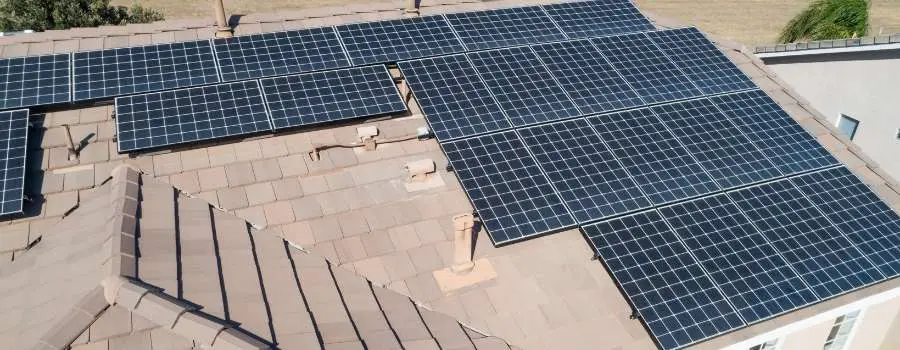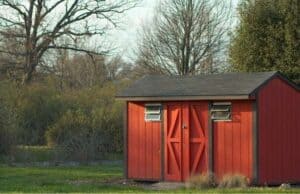
When most people start to think about solar power for their homes they may be under the impression that more solar panels are better. What very few people do…at least until they start to add up the costs of solar panels…is consider how many solar panels they “really” need.
Remember, solar energy is a great way to power your home and save money…in the long run. In the short term, there is a substantial upfront cost to solar power. You have all the equipment, consultations, and installation to think about.
It is a possibility that you may overestimate how many solar panels you need…meaning you could have saved some money at the very costly beginning of your solar energy journey.
Can You Install Too Many Solar Panels?
In general, the solar installation company you use will help you determine the correct number of solar panels for your family’s needs. However, you may overestimate your power consumption and end up with more panels than you need.
Investing in solar power can cost upwards of $25,000 for a typical home. You need to consider the number of panels you are installing and how many months they will be able to offset your monthly electricity bill needs before making your decision.
There is also an incentive program that offers 30% tax credit on what you spend upfront when going solar. If you choose more than one company to install your panels, you may not be eligible for the credit if they are from different companies. However, these tax incentives are quickly going away.
Will Too Many Solar Panels Overload My System?
Solar panels produce DC (direct current) voltage, it doesn’t have to pass through a load so you don’t run the risk of overloading your system with too many solar panels. DC power is run through an inverter to turn it into usable AC power, the inverter will regulate how much energy it converts.
Most people who are on the fence about solar power don’t want to make a bad decision. They may be worried that too many panels will cost them more than they can afford or take up space where they need it for some reason.
One thing to note is that some solar panels operate more efficiently than others…even ones from the same company. Now, this should all average out and your system as a whole should match whatever efficiency rating your solar company advertises.
What Can I Do With Excess Solar Panels?
In most cases, the company that you use to install your system will take back any excess panels. If it’s after installation you may be able to sell them yourself, you keep them as backups or use them on detached buildings like sheds and garages.
Aside from returning them to the company, you bought them from, here are a few other ideas to make use of excessive solar panels:
- Sell them to people or companies looking for a similar installation
- Use them as a backup for your system
- Install the panels on detached buildings like sheds and garages. In this way, you can generate power without taking up space in your home or yard.
- Consider donating them to a church or school
Sell To Others
There may be companies out there who might want additional panels from you if they know what kind of system you have. These companies will also pay you to take them off your hands.
Store Them
Solar panels are large and probably not the easiest thing to store, but if you have the room you may benefit from a few extra panels. While solar technology is trending down in its overall price tag, you never know how inflation will ebb and flow, so buying now may save you some money rather than buying in a decade.
Detached Building

If you have an extra panel or two you may want to hook them up to a shed or detached garage.
You could add some lighting and possibly some heat or AC to make your out-building more comfortable to use year-round.
Donate
You could also consider donating excess solar equipment to local churches or schools.
Donating to churches or small businesses could help give them a leg up on saving some money and donating to a school may spark some new learning in solar technologies. The bonus for you is that you would likely benefit from a tax write-off (but check in your area to make sure.)
How Many Solar Panels Can I hook Up To Each Inverter?
Typically, solar inverters have an input capacity that limits how many watts they can handle at once. For example, if you attached 1000W worth of panels to a 1500-watt inverter then it would shut down because that exceeds the inverter’s input capacity.
Most “solar talk” deals with how many kilowatts instead of how many panels. So to get a specific number of panels for each inverter is a tough one to answer. You need to see how many kW your inverter can handle and check how many kW your solar panels produce.
Inverters also come with their own limits in terms of amps which are measured in A or Amps per hour. For example, if an inverter has an input capacity limit of 1500W but only 50A max then it can only handle 1500W worth of panels.
And that doesn’t even go into the different kinds of inverters that are available. For more details on different types of inverters and their uses, check out this article:
Inverters will also have a maximum voltage level and if you exceed that voltage then it could permanently damage your system. Some panels work better with low voltages so using these to power an inverter may be more efficient than high-voltage panel inputs, which can overload the unit at higher levels of sun.
Final Thoughts
Bottom line, it’s important to get a strong estimate of how many solar panels you will need. Carefully consider your power usage and think of ways you can cut back if you feel the number is a bit too high.
Don’t forget to consider what you think your needs might be in the future also…are you going to add on to your house, build detached buildings that you may want to run solar power too, expand your family, etc.
